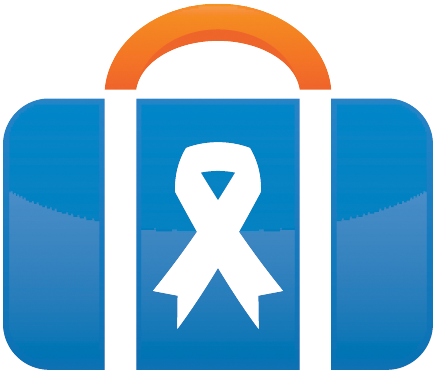Fundraising events are critical components of your nonprofit’s fundraising portfolio. Beyond raising mission-critical funds, these events let your organization engage with supporters, onboard new donors, and raise awareness for your cause. Because fundraising events hold such value, it’s crucial for your nonprofit to find ways for your events to stand out and improve their outcomes year over year.
As you wrap up this year’s slate of fundraising events and begin to plan for next year, use these tips to boost your event’s attendance and, by extension, your fundraising outcomes.
1. Analyze Last Year’s Data
The data you collect at fundraising events can provide valuable insights into their success and improvement opportunities. Analyzing event data can help you plot a path forward and determine what areas can provide the most meaningful improvement.
For example, let’s say your nonprofit hosted a charity golf tournament last year. Take a deep dive into the data you have at your disposal, such as:
- Number of golfers or teams and sponsors
- Total dollars raised, gross and net (you might even break it down further and look at dollars raised from team registrations, sponsorships, and donations)
- Tournament budget, including estimated and actual income and expenses
- Feedback from golfers, volunteers, and tournament sponsors
This analysis will help you determine where to go next year to improve outcomes and fundraising success and help you answer questions such as:
- Is my event management software built to handle golf’s intricacies, or is it costing my team time and effort?
- Should we raise prices for teams and sponsors?
- Are there opportunities to solicit donations throughout the tournament?
- Where can we reduce expenses and boost income?
2. Add Components That Drive Revenue
Most fundraising events come with opportunities for additional activities or components that can help drive revenue and, in many cases, additional fun and excitement. These can often help attract participants to your event while opening up another revenue stream.
Let’s continue with the charity golf tournament example. There are a variety of add-on options you can leverage to drive revenue and add more fun to the day:
- Hole-in-one contests. Golfers love the chance to test their skill—or luck! Hole-in-one contests tend to draw more golfers and add a sense of anticipation to the tournament. Plus, having hole-in-one insurance in place ensures your nonprofit isn’t on the hook to fund the contest’s prize if someone gets an ace.
- Auctions. Golfers typically represent an affluent demographic, and live and silent auctions tend to do well with this demographic. Be selective in the items you offer and tailor them to your specific audience’s interests.
- On-course games and challenges. These activities break up the round of golf and give golfers the chance to better their score, gain a more desirable location on the hole, or win a prize. Golfers pay to participate in these activities, which have the potential to bring in a significant amount of income.
No matter what type of event you’re holding, it’s a good idea to broaden its focus to include multiple activity offerings. To jumpstart planning, you might ask last year’s attendees what additional things they want to see at your events.
3. Create Partnerships With Event Sponsors
If you’re not already selling sponsorships for your fundraising events, now is the time to start! Sponsors provide arguably the most important revenue stream for your event, so it’s imperative that you work directly with sponsors to make sure you’re meeting their needs and helping them achieve their goals for sponsoring the event.
Creating a true partnership with businesses will help improve sponsor retention year after year and open the door to other types of support for your event, such as:
- Marketing partners. The business uses its organic marketing channels to help promote your event, which helps drive attendance and demonstrates its commitment to supporting good causes.
- In-kind donors. Sponsors are great targets for in-kind donations to support your event in addition to or in lieu of monetary support. These types of donations can be used for prizes, attendee gifts, auction items, raffle prizes, or offset costs for things like food, beverage, tech support, or venue rental.
- Volunteers. Sponsors are ideal volunteers for your event. For example, you might invite the hole-in-one contest sponsor to run the contest and serve as a witness, which allows them to engage with each group of golfers. The business might also be willing to provide employees to serve as volunteers to help with event planning and execution.
As you design your event’s sponsorships for next year, NXUnite suggests creating custom pitches and various levels based on the prospective sponsor’s philanthropic priorities and business offerings. It’s also a good idea to set expectations for your organization and the nonprofit regarding deliverables, roles, and responsibilities so neither party is surprised or disappointed when the event arrives.
4. Gamify Elements of Your Event
A little friendly competition can go a long way in motivating donors to participate—and give more! Gamification can make your fundraising event even more interactive and engaging than last year. There are countless ways to gamify parts of the event, but here are some ideas to get you started:
- Leaderboards. These are an especially great option for golf tournaments. With the right management software, live leaderboards let participants and spectators track standings and even make a donation right from the leaderboard. You could encourage all participants to donate their team’s score at the end of the round.
- Individual and/or team challenges. These could focus on peer-to-peer fundraising where individuals or teams go head-to-head to see who can raise the most money. Challenges might also center on trivia, a scavenger hunt, skills contests, or other competitions.
- Social media challenges. To better track participation, challenge event attendees to follow you on all social media platforms and create a custom hashtag for your event. You might focus the challenge on the number of times people use the hashtag, interact with your posts, or engage with your social content in other ways. These challenges can start well before the event and continue after it concludes.
Offer exciting prizes to encourage attendee participation! Prizes might include gift cards to local restaurants or businesses, gift baskets, and branded merchandise.
5. Offer Exclusive Experiences for Top Donors
Keeping your major donors engaged with your nonprofit’s events is crucial for fostering and stewarding their support for the future. Making them feel special with exclusive experience can express your appreciation and motivate them to continue—and hopefully increase—their donations.
Here are some ideas for major donor-exclusive experiences you could consider:
- VIP meet and greet with organizational beneficiaries, guest speakers, your nonprofit’s executive director or board chair, or other appropriate individuals.
- Private dinner reception or cocktail hour in tandem with your fundraising events
- Naming rights for the entire event or specific component
- Behind-the-scenes tour of the event venue
- Unique commemorative items or gifts
- Recognition during the event
Final Thoughts
Before you consider any of the above ideas, it’s even more important to ensure you have a good handle on your fundraising event’s logistics, planning process, and the roles and responsibilities of the planning team. You’ll also want to make sure you have the tools you need to effectively plan, manage, and execute your event in place. Ensuring your event goes off without a hitch resonates with participants and donors, who will likely remember it—and your nonprofit—as a positive experience.




